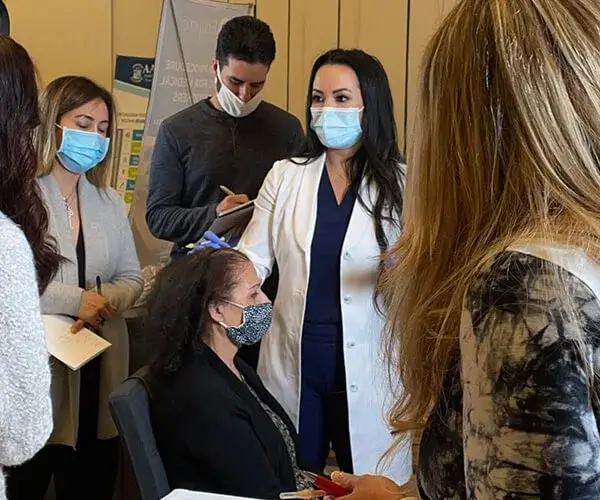A Closer Look at 'Chin Botox® Gone Wrong'
By Dr. Stephen Cosentino
PRESIDENT OF EMPIRE MEDICAL TRAINING
Each year, millions of patients seek out minimally invasive chin augmentation procedures like botulinum toxin type A (Botox®) and dermal fillers instead of more invasive alternatives like chin implants and plastic surgery.
Botox and filler cost much less than implants and surgery, for starters. They’re also seen as less risky.
But they’re not entirely risk-free. Both can have unpleasant and sometimes unsightly side effects. In fact, you’ve probably heard horror stories of “chin Botox gone wrong” and “chin filler fails.” Let’s dig in and find out why these happen and what you can do about them, if anything.
Chin Botox Gone Wrong: Why It Happens
Botox works by temporarily paralyzing muscles at and near the injection site. When chin Botox providers inject Botox in the wrong places, “collateral damage” occurs, paralyzing muscles that weren’t meant to be affected.
This can cause unsightly — sometimes, spectacularly unsightly — complications like frozen or crooked smile, involuntary drooling, and impaired lip movements. Without intervention, these effects may last as long as Botox remains in the affected muscles, generally three to six months.
The best way to avoid chin Botox gone wrong is to ensure only appropriate chin Botox injection sites are targeted. Careful pre-procedure planning and comprehensive provider training can make all the difference.
Chin Filler Side Effects to Watch For
Botox isn’t the only minimally invasive treatment popular with chin augmentation patients. Dermal fillers can also treat a range of chin area cosmetic complaints. They too have risks, some of which can be unsightly.
What Are Chin Filler Side Effects?
According to a paper published in the Journal of Cutaneous Aesthetic Surgery, common side effects of chin and jawline fillers include erythema (redness), edema (swelling), bruising, and granulomas (small pumps) around the injection site. Rarer but potentially more serious side effects include blood clots (usually due to improper injection into a blood vessel) and related complications, such as vision impairment.
How Long Do Chin Filler Side Effects Last?
Chin filler side effects last as long as the material remains in the body. Without intervention, that’s:
- Six to 18 months for hyaluronic acid filler, of which Juvederm® Volux is the only FDA-approved injectable filler for chin augmentation
- Up to 24 months for calcium hydroxylapatite filler, a type of filler that can be used for recessed chin remediation and jawline augmentation
How to Reverse Botched Chin Augmentation
It’s impossible to eliminate the risk of complications following chin Botox or filler procedures. You can tilt the odds in your favor by choosing a board-certified dermatologist or other licensed, board-certified medical professional who has completed advanced dermal filler and Botox training coursework, but even the best practitioners can’t control every variable at play.
Many patients simply wait out mild side effects. That’s not a great option for managing unsightly complications or issues that affect your quality of life, however.
The good news is that follow-up treatments may help reduce or even correct complications. For example, small amounts of Botox may “even out” asymmetric or droopy smile, and small amounts of filler can achieve similar results in certain cases. Other options to discuss with your provider include:
- Facial massage
- Steroid application
- Warm compresses
- Topical nitroglycerin
And for hyaluronic acid fillers specifically, injections of an antidote known as hyaluronidase can dissolve the material and allow for a fresh start.


